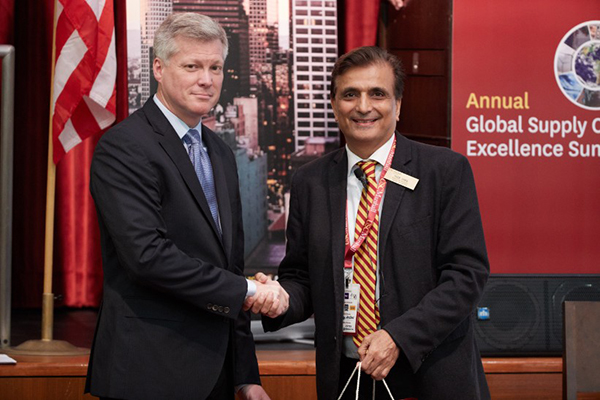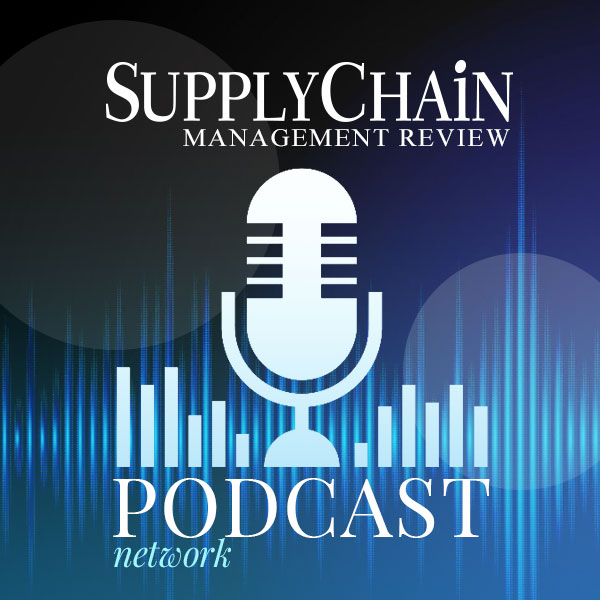 A former supply chain executive, Nick Vyas is the executive director and co-founder of the University of Southern California's Marshall Center for Global Supply Chain Management and assistant professor of clinical data sciences and operations. In this exclusive interview, he shares his views on “Solving the E-Commerce Puzzle,” a subject that will be addressed in greater detail a the 7th Annual Global Supply Chain Excellence Summit, August 8 and 9, 2019
A former supply chain executive, Nick Vyas is the executive director and co-founder of the University of Southern California's Marshall Center for Global Supply Chain Management and assistant professor of clinical data sciences and operations. In this exclusive interview, he shares his views on “Solving the E-Commerce Puzzle,” a subject that will be addressed in greater detail a the 7th Annual Global Supply Chain Excellence Summit, August 8 and 9, 2019
Supply Chain Management Review: How is e-commerce changing the way we approach logistics/distribution network strategy?
Nick Vyas: The increased demand on e-commerce and omnichannel markets have created an immense focus on last-mile delivery. As high-density population growth in Tier 1 cities and vertical residential complexes challenges the delivery of parcels to individual units within large complexes, the importance of the last hundred-feet has directly increased. Consumer-driven demand (dynamic) has made replenishment and dynamic visibility of inventory pivotal in new network design.
SCMR: So what is the best approach for managers today?
Vyas: The challenge for managers is to become data-dependent and learn to lean away from heritage models. Today’s managers must drive intelligence from data to help assist and augment design for supply chain strategies. In order to make informed decisions, managers must consider agility, adaption, and constant market change in which consumers change the expectations and needs on a rapid basis. In order for managers to embrace this new model, they have to adapt to dynamic network design model where marketplace-based assets are leveraged (consider the business model of Warehouse Exchange, where labor and warehouses can be outsourced in response to market demands) to rely on the space and capacity throughout the year.
SCMR: Any insights on how markets will change in the coming years?
Vyas: What the micro-macro trends of emerging tech in supply chains show us are that artificial intelligence, machine learning, blockchain, robotic process automation (RPA), and advanced robotics will play a crucial role in supply chain. The data-driven intelligence will augment future supply chain leaders' ability to make decisions and drive strategy for logistical decisions. Historic tribal and domain knowledge will become obsolete and managers will have to adapt to new trends and drive network decisions in rapid ways to adapt to new environments.
SCMR: How can e-commerce bring the information needed to allocate resources more efficiently?
Vyas: Advanced data analytics models along with predictive and prescriptive algorithms are capable of assisting resource requirements much ahead of actual demand. The challenge for e-commerce lies in the capture, synthesis, and managing the vast forms of data required to synchronize and draw various informed decisions.
SCMR: What are the major risks for managers embracing an e-commerce strategy?
Vyas: As we have seen, market share has been rewarded to larger players at a greater rate. It appears the consolidation of the large players and their market share is disproportionate to small and mid-size companies. This is due to infrastructure and large-capital investments and innovation in emerging technology that large players have plenty of capital to spend, smaller players are squeezed out of the marketplace.
Because e-commerce is so new (the internet itself is nascent compared to the age-old trade systems of the past), very little oversight from regulatory agencies has been applied, thus resulting in minimal restriction for large players. It has also become difficult for new players to viably compete the e-commerce market due to barriers of entry. This trend will continue unless regulatory bodies or government intervention were to restrict the growth of monopoly of market.
SCMR: Has technology reached a level of maturity that certain key players such as ocean shippers, industry clearinghouses such as ISO standards, and public-private partnerships will step up?
Vyas: In many instances, we are seeing new collaborations start up between ocean players and tech, i.e., IBM and Maersk; or GE and the Port of Los Angeles, which collaborate to drive the next generation of data visibility and integration in supply chain. Research institutions such as our USC Center for Global Supply Chain Management are working with Department of Commerce, having signed memorandums and leading initiatives to increase digitization efforts to drive regulatory bodies, academia, and industries to work together to come up with futuristic solution using emerging technologies. Partnerships are a low-cost way to decrease barriers of entry for organizations and companies to enter the world of technological investments and developments.
SCMR: Will shippers start tracking productivity per worker in order to ensure ROI for new technology and worker investments?
Vyas: Frankly, productivity tracking has already been in place for decades. New emergent technology and tracking activity software aim to further trace data increments to granular levels for productivity and quality of automatic processing. However, the ROI on new productivity tracking may be blue sky potential, because shippers face much more intrinsic problems such as seasonal labor. During peak season, shippers become heavily reliant on seasonal labor, most of which is not well-trained or invested in the organization, thus high turnover and lack of morale become the linchpin of the shipper's human resources dilemmas. Though seasonal laborers do their best in each given situation, the workforce is untrained; therefore, even if with sophisticated productivity tracking systems, they both have nothing to lose and very little to gain. Even if technology becomes more robust, the seasonality of demand creates a conundrum for itself.
SCMR: What is the biggest challenge outside of technology and growth that e-commerce industry faces?
Vyas: Human capital. For the last forty to fifty years, supply chain professionals have emerged from various disciplines without proper training academic and practical training from end-to-end supply chain standpoint. Thus far, the development and training of supply chain professionals has been through a natural and measured system, where leaders mostly derived from business, procurement, or finance departments, and organically found their ways into supply chain and logistics. However, current demand on e-commerce now requires leaders to recruit and hire talent with advanced training in technology and data analytics.
SCMR: Any final thoughts?
Vyas: As a professor and academic director for the USC Marshall M.S. in Global Supply Chain Management program, the predictive outlook calls for educating the workforce—not just for today, but for tomorrow. Companies and organizations must secure leaders that can manage current challenges and adapt to new methods and models. Futuristic and forward organizations need to embrace not only look towards their chief supply chain officers in the traditional sense, but also as chief knowledge and future officers.
SC
MR


Latest Supply Chain News
- How S&OP provides the answer to in-demand products
- AI, virtual reality is bringing experiential learning into the modern age
- Humanoid robots’ place in an intralogistics smart robot strategy
- Tips for CIOs to overcome technology talent acquisition troubles
- There is still work to do to achieve supply chain stability
- More News
Latest Podcast

 Explore
Explore
Topics
The Academy News
- AI, virtual reality is bringing experiential learning into the modern age
- Predicting stockouts: Enhancing FMCG resilience through data-driven insights
- Finding the Right Approach for Supply Chain Education
- The Supply Chain Triad
- Innovating Supply Chain Higher Education with Generative AI
- How Smart Supply Chain Management Boosts Brand Identity
- More The Academy
Latest Academy Resources

Subscribe

Supply Chain Management Review delivers the best industry content.

Editors’ Picks





